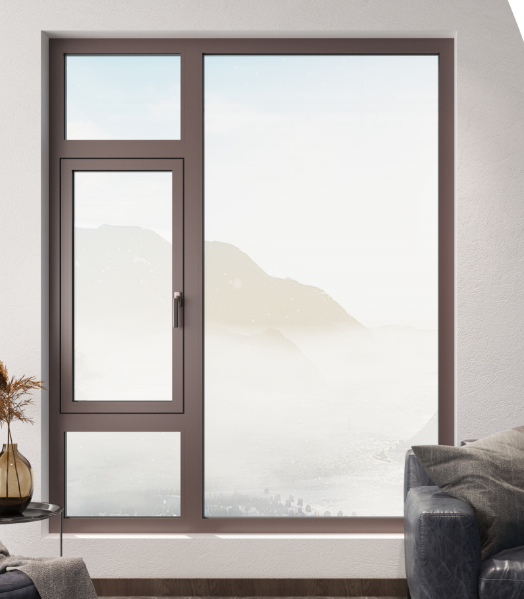Email format error
Email cannot be empty
Email already exists
6-20 characters(letters plus numbers only)
The password is inconsistent
Email format error
Email cannot be empty
Email does not exist
6-20 characters(letters plus numbers only)
The password is inconsistent


Manufacturing Processes and Technologies in Aluminum Windows: A Focus on Chinese Innovations
The aluminum windows industry has undergone significant evolution over the years, driven by advancements in manufacturing processes and cutting-edge technologies. Chinese manufacturers have played a crucial role in this transformation, leveraging their expertise to produce high-quality, innovative aluminum windows. This article explores the advanced manufacturing techniques, innovative technologies, and rigorous quality control practices employed by aluminum windows manufacturers in China.
Advanced Manufacturing Techniques Used by Chinese Companies
Precision Cutting and Shaping
One of the cornerstones of high-quality aluminum window production is precision cutting and shaping. Chinese manufacturers have invested heavily in state-of-the-art machinery to ensure that each aluminum profile is cut and shaped with utmost accuracy. Advanced CNC (Computer Numerical Control) machines are commonly used, allowing for precise and consistent cuts that meet exact specifications. This precision is crucial in ensuring that all components fit together seamlessly, resulting in a finished product that is both aesthetically pleasing and functional.
Advanced Welding and Joining Methods
Welding and joining methods are pivotal in creating strong, durable aluminum windows. Chinese manufacturers utilize advanced welding technologies, such as TIG (Tungsten Inert Gas) welding and MIG (Metal Inert Gas) welding, to ensure robust joints that can withstand various stresses. These methods provide high-strength welds with minimal distortion, contributing to the overall durability of the windows. The use of automated welding systems further enhances consistency and reduces human error, ensuring that every window meets stringent quality standards.
Surface Finishing and Coating
Surface finishing and coating are essential for both the appearance and longevity of aluminum windows. Chinese manufacturers employ advanced techniques such as anodizing and powder coating to provide a durable, corrosion-resistant finish. Anodizing involves an electrochemical process that thickens the natural oxide layer on aluminum, enhancing its resistance to weathering and wear. Powder coating, on the other hand, involves applying a dry powder that is then baked to form a protective layer. This coating process not only adds aesthetic appeal but also provides excellent resistance to UV radiation and environmental elements.
Automation and Robotics
The integration of automation and robotics in manufacturing processes has revolutionized the production of aluminum windows. Chinese factories are increasingly adopting automated systems to handle repetitive tasks such as assembly, glazing, and packaging. Robotics enhance precision and efficiency, allowing for faster production times and reduced labor costs. Automated systems also ensure consistent quality, as they are programmed to perform tasks with high accuracy and minimal variation.
Integration of Digital Technologies
Digital technologies have become integral to modern manufacturing, and aluminum windows production is no exception. Leading aluminum windows manufacturers in China utilize digital tools for design and production. Software programs for Computer-Aided Design (CAD) and Computer-Aided Manufacturing (CAM) allow for precise modeling and simulation of window systems before they are physically produced. This digital integration helps streamline the design process, reduce errors, and facilitate customization.
Innovations in Aluminum Window Technology
Smart Windows
The advent of smart window technology has added a new dimension to aluminum windows. Smart windows are equipped with sensors and electronic controls that allow them to respond to environmental changes. For example, some smart windows can adjust their tint based on sunlight intensity, improving energy efficiency and indoor comfort. Chinese manufacturers are at the forefront of developing these advanced solutions, incorporating features such as remote control via smartphones and automated adjustments based on weather conditions.
Energy-Efficient Designs
Energy efficiency is a major consideration in modern window design, and Chinese manufacturers have made significant strides in this area. Innovations such as thermal breaks and double glazing are commonly used to enhance the energy performance of aluminum windows. Thermal breaks involve inserting a layer of insulating material between the inner and outer frames, reducing heat transfer and improving insulation. Double glazing, which consists of two layers of glass separated by an insulating gap, further enhances thermal efficiency and reduces energy costs.
Sustainable Materials and Practices
Sustainability is increasingly becoming a priority in manufacturing, and Chinese aluminum windows manufacturers are embracing this trend. The use of recycled aluminum is a notable example of their commitment to environmental responsibility. Recycled aluminum requires less energy to produce compared to primary aluminum, reducing the overall carbon footprint of the manufacturing process. Additionally, many manufacturers are adopting eco-friendly practices such as waste reduction and energy-efficient production methods.
Customization and Design Trends
Customization has become a significant trend in the aluminum windows industry, and Chinese manufacturers are well-equipped to meet diverse design preferences. Advances in manufacturing technologies allow for a wide range of customization options, from different frame colors and finishes to various shapes and sizes. This flexibility enables architects and homeowners to create unique window solutions that complement their specific design requirements. Chinese manufacturers are adept at incorporating these customizations while maintaining high standards of quality and performance.
Quality Control and Standards
Ensuring Product Quality
Quality control is a critical aspect of aluminum window manufacturing, ensuring that each product meets the highest standards of performance and reliability. Chinese manufacturers employ a variety of methods to ensure quality throughout the production process. These methods include rigorous testing of materials, in-process inspections, and final product evaluations. Quality control teams are responsible for identifying and addressing any defects or inconsistencies before the windows are shipped to customers. By maintaining strict quality control measures, Chinese manufacturers can deliver products that meet or exceed international standards.
Compliance with International Standards
To compete in the global market, Chinese manufacturers must adhere to international standards for aluminum windows. These standards cover various aspects of performance, including structural integrity, thermal efficiency, and safety. Chinese manufacturers often comply with standards such as the International Organization for Standardization (ISO) 9001 for quality management and the European Union's CE Mark for product safety. Compliance with these standards not only ensures product quality but also facilitates market access in regions with stringent regulations.
Common Certifications
Certifications play a crucial role in validating the quality and performance of aluminum windows. Chinese manufacturers often obtain certifications to demonstrate their adherence to industry standards. For example, ISO 9001 certification indicates that a manufacturer has implemented a quality management system that meets international requirements. The CE Mark, a certification required for products sold in the European Economic Area, signifies that the windows meet essential health, safety, and environmental protection requirements. These certifications provide assurance to customers and stakeholders that the products have undergone rigorous testing and meet recognized standards.
Quality Assurance Practices
Quality assurance practices are integral to maintaining high standards in aluminum window production. Chinese manufacturers employ a range of practices to ensure that each window meets quality benchmarks. These practices include comprehensive testing procedures, such as pressure tests for weather resistance and durability tests for long-term performance. In addition, manufacturers often use statistical process control (SPC) techniques to monitor and analyze production data, identifying and addressing potential issues proactively. By implementing these quality assurance practices, Chinese manufacturers can consistently deliver reliable and high-quality aluminum windows.
Conclusion
The aluminum windows industry has seen remarkable advancements in manufacturing processes and technologies, with Chinese manufacturers playing a pivotal role in driving innovation. From precision cutting and advanced welding methods to smart window technology and sustainable practices, Chinese manufacturers are at the forefront of producing high-quality, cutting-edge aluminum windows. Their commitment to rigorous quality control and adherence to international standards ensures that their products meet the highest performance and safety criteria.
As the industry continues to evolve, the role of aluminum windows manufacturers in China will remain crucial in shaping future trends and setting new benchmarks for quality and innovation. Whether for residential, commercial, or industrial applications, aluminum windows from Chinese manufacturers offer a compelling combination of durability, efficiency, and aesthetic appeal, making them a preferred choice for customers worldwide.

